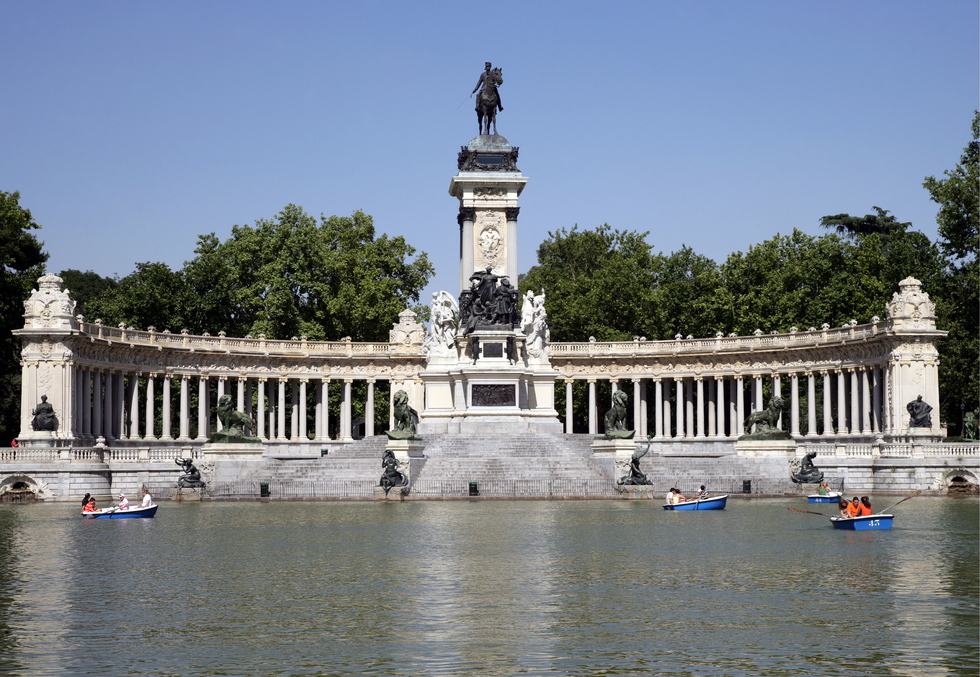On Sunday, UNESCO inscribed the historic Paseo del Prado avenue and El Retiro Park in Madrid. Also, the Trans-Iranian Railway and the Ramappa Temple in Telangana, South India, as World Heritage monuments. The Prado Museum is located on the tree-lined Paseo del Prado in the heart of the Spanish capital. Then, El Retiro Park is one of the city’s most popular attractions. Here are some of the most recent sites which are now a part of the UNESCO World Heritage List in 2021. They are some really exotic places.
Cultural sites added to World Heritage List 2021
Spain’s main attractions

El Retiro (The Retreat), is an urban green space with a boating lake popular with locals and visitors. It was once a palace and gardens created for King Felipe IV’s personal use in the 17th century. The 200-hectare cultural environment is located in the center of Madrid. It has evolved since the 16th-century construction of the tree-lined Paseo del Prado avenue. It is a forerunner of the Hispanic Alameda or promenade.
“The avenue features major fountains, notably the Fuente de Cibeles and the Fuente de Neptuno, and the Plaza de Cibeles, an iconic symbol of the city, surrounded by prestigious buildings. The site embodies a new idea of urban space and development from the enlightened absolutist period of the 18th century,” the organization said.
“Buildings dedicated to the arts and sciences join others in the site that are devoted to industry, health care, and research. Collectively, they illustrate the aspiration for a utopian society during the height of the Spanish Empire.”
According to Spain’s Foreign Ministry, the Paseo del Prado “was one of the first boulevards inside the city limits of all European cities and capitals… where all citizens, without distinction of class, could enjoy leisure and a stroll.” The award was “especially symbolic” in the current pandemic environment. Space had “fully fulfilled the function for which it was originally created,” according to the statement.
Prime Minister Pedro Sanchez was swift to celebrate the announcement. He wrote in a tweet; “Deserved recognition for a space in the capital that enhances our historic, artistic and cultural legacy.”
Meanwhile, Madrid Mayor Jose Luis Martinez-Almeida tweeted; “Proud of our city, and happy for Spain and the legacy of its capital.”
The Trans-Iranian Railway
The Trans-Iranian Railway runs from the Caspian Sea in the north to the Arabian Gulf in the south; passing through two mountain ranges, rivers, highlands, forests, and plains; as well as four different climatic zones are a part of the UNESCO World Heritage Site.
“Started in 1927 and completed in 1938, the 1,394-kilometer-long railway was designed and executed in a successful collaboration between the Iranian government and 43 construction contractors from many countries,” UN explained. “The railway is notable for its scale and the engineering works it required to overcome steep routes and other difficulties.
“Its construction involved extensive mountain cutting in some areas, while the rugged terrain in others dictated the construction of 174 large bridges, 186 small bridges, and 224 tunnels, including 11 spiral tunnels. Unlike most early railway projects, construction of the Trans-Iranian Railway was funded by national taxes to avoid foreign investment and control.”
The Rudreshwara Temple
The Rudreshwara Temple, also famous as Ramappa Temple, is a recent inclusion in the World Heritage list. It is in India’s south-central state of Telangana. It’s in the village of Palampet, some 200 kilometers north of Hyderabad.
According to UNESCO, Ramappa Temple is the principal Shiva temple in a walled complex. Kings Rudradeva and Recharla Rudra built it during the Kakatiyan era (1123-1323 CE). The sandstone temple started in 1213 CE. It took 40 years to complete.
“The temple’s sculptures of high artistic quality illustrate regional dance customs and Kakatiyan culture. Located at the foothills of a forested area and amidst agricultural fields, close to the shores of the Ramappa Cheruvu, a Kakatiya-built water reservoir, the choice of setting for the edifice followed the ideology and practice sanctioned in dharmic texts that temples are to be constructed to form an integral part of a natural setting, including hills, forests, springs, streams, lakes, catchment areas, and agricultural lands,” UNESCO said.
China’s ancient port of Quanzhou
On Sunday, Quanzhou, China’s historic harbor, was the new inclusion in the list. It is the country’s 56th Unesco World Heritage Site. It is joining Lushan National Park (1996), Site of Xanadu (2012), and The Great Wall of China (1987).
Quanzhou: Emporium of the World in Song-Yuan China is a serial inscription of 22 locations. It includes temples, port ruins, old bridges, and also kilns, named Quanzhou: Emporium of the World in Song-Yuan China. Dacheng Palace Hall, Qingjing Mosque, Islamic Tombs, Liusheng Pagoda, Meishan Dock, Kaiyuan Temple, and others are among the attractions.
More about the UNESCO World Heritage
The World Heritage Committee is meeting in Fuzhou, China. It is for a two-week session to review the state and administration of over 1,100 current sites. Also, to receive proposals from governments for new World Heritage Sites.
This year, 39 nominations for 2020 and 2021 are up for consideration, with cultural, natural, and mixed-use areas included.
Then, on Saturday five sites up for consideration included Saudi Arabia’s Hima Cultural Area. Four European assets, including the Great Spa Towns of Europe, France’s Cordouan Lighthouse, and also Germany’s Mathildenhohe Darmstadt.
After worries over overdevelopment, including proposals for a new football stadium, Liverpool’s waterfront was out from UNESCO’s list last week. Due to development in the city’s north docks, Liverpool has been on UNESCO’s “in danger” list since 2012.
